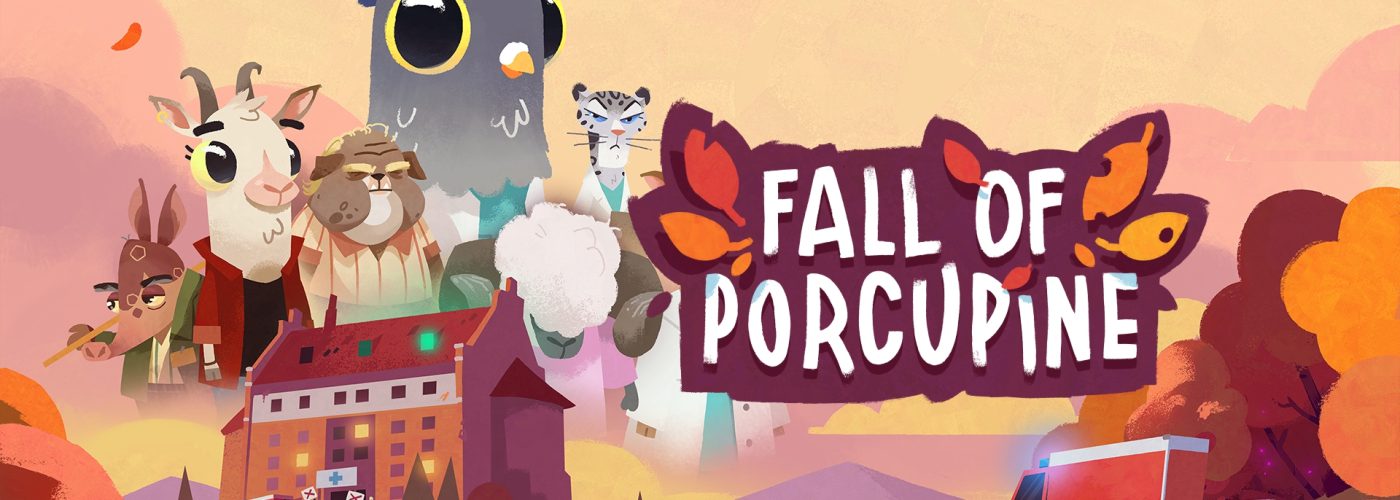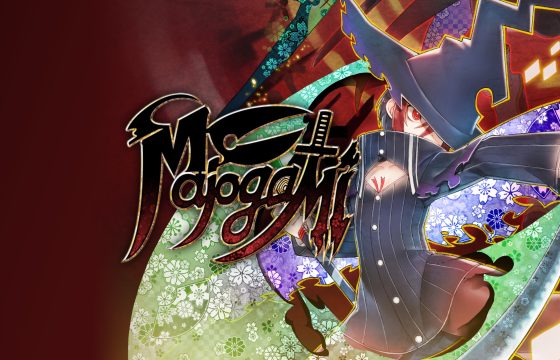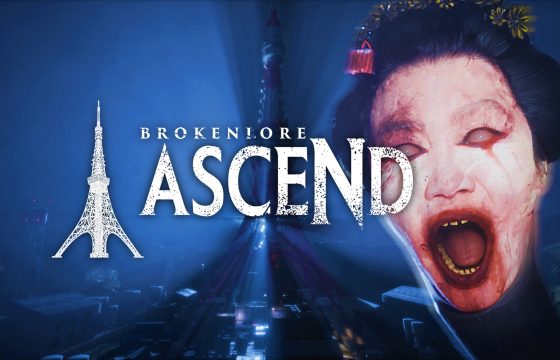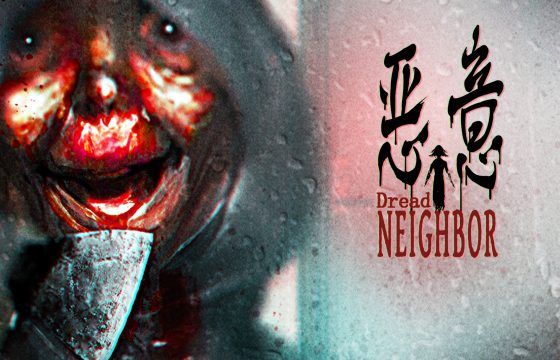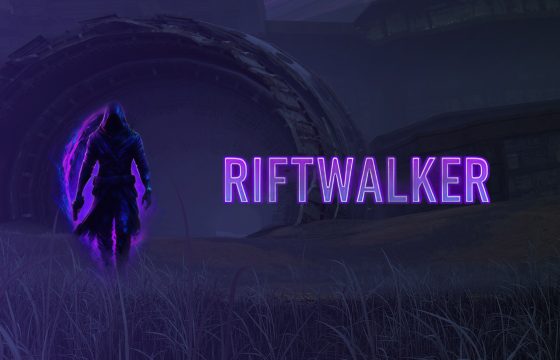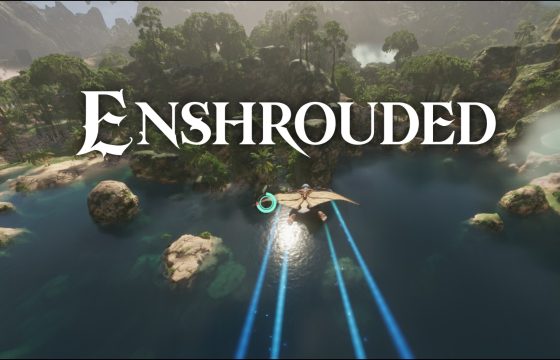Fall of Porcupine is a bittersweet adventure that focuses on dialogue and a strong mature narrative. Critical Rabbit will accompany us to discover this world, but be careful. Appearances can often be deceiving.
Fall of Porcupine amazes from the first moment. We wake up completely wrapped in darkness. Making our way through it we come to a clearing with a huge tree that resembles the one from the fairy tale of Jack and the Beanstalk. We can jump and climb on it until we dive into the water. We are evidently in a fantasy world, or perhaps we are dreaming. However, the only thing we can do is move forward.
From there, along a beach we will jump on an inflatable until we get to the sky, or better to literally walk on clouds. Here we will meet a huge cloud with strange features and we begin to wonder what happened to our patient.
The patient’s name is Mr. Arndes, we can’t find him anymore and suddenly we will find ourselves in front of an elevator.
After taking it we find ourselves walking the corridor of a disturbing hospital in search of the missing patient. The floor is covered in a trail of blood and some rooms are illuminated by a yellowish light. Finally we find our patient in pain in a corner and, as we get closer, a pile of boxes collapses on top of us.
Thus begins our adventure.

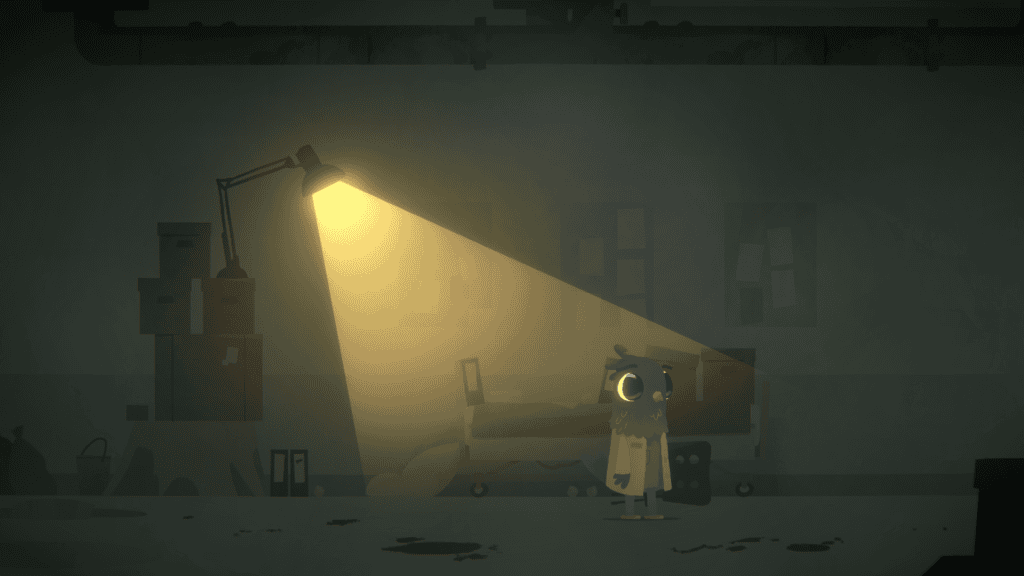
A rude awakening
We find ourselves in our bed, awakened by the ringing of our cell phone. A colleague of ours called us to ascertain our conditions. Then it wasn’t all a strange dream.
We play as Finley, a young doctor who has recently moved to the small town of Porcupine and works in the local hospital. Finley is a sometimes naive boy but with a big heart. He cares about his patients and empathizes a lot with them. Obviously this also has negative sides and sometimes does not allow him the right professional detachment. Young as he is, he seems quite disillusioned. He lives this attitude with a bizarre sense of humor that leads him. For example, to have long dialogues with the monuments of the country, our apartment plant and even with the candy dispenser! In fact, as soon as we get out of bed, we notice a bandaid on Finley’s forehead. He also suffers from severe amnesia about what happened last night.
No time though! We are late for our shift at the hospital. We leave in such a hurry but with the idea of clarifying and remembering what happened that night in ward 5.
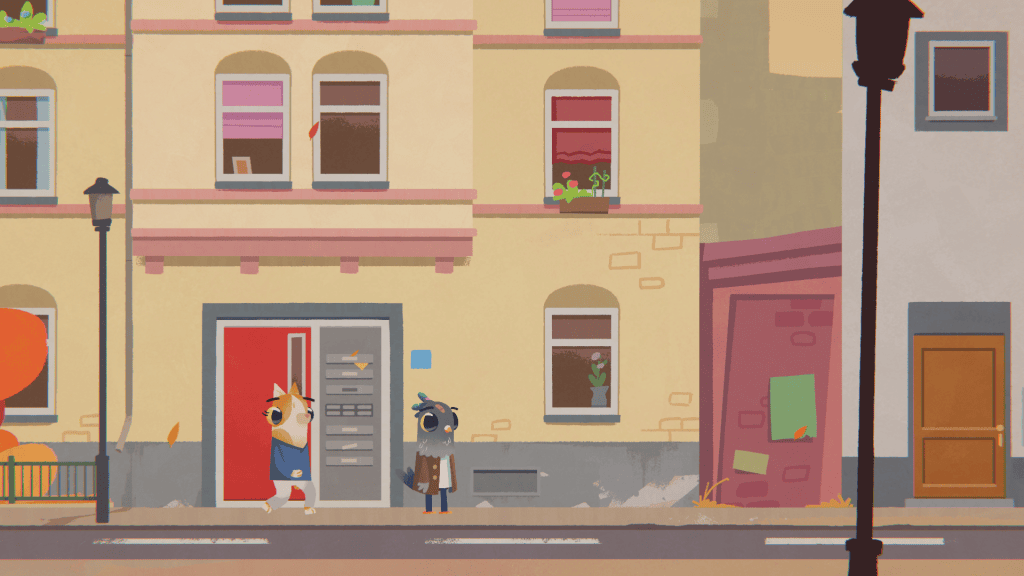
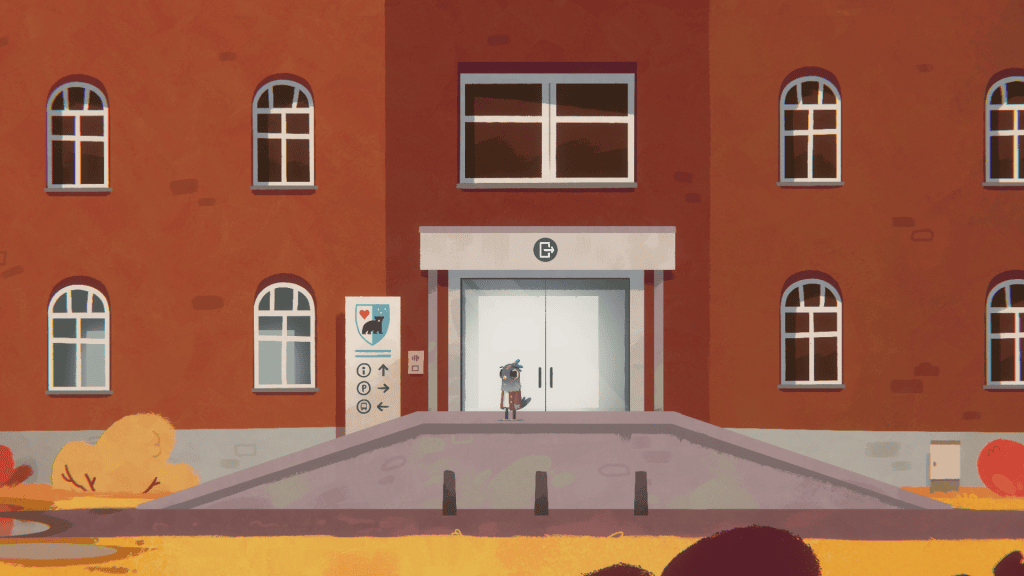
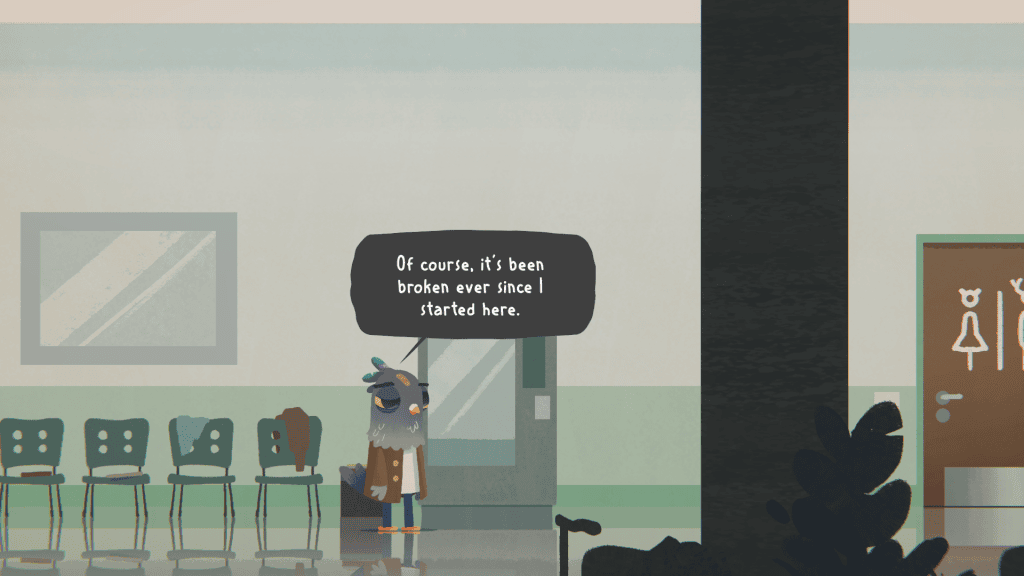
Town Life in Porcupine
As soon as we leave the house we find ourselves in front of a world just waiting to be explored. Places to visit, people to talk to and interlace relationships. Every place or inhabitant that will show an icon will be interactable and will be able to tell us something of its own. The game is strongly based on dialogues, long and full of information that will make us know the various faces of this town more and more. The game itself is very exploratory and takes its time to play. There are two main types of shortcuts: the bus stop and the hospital elevator, but I would like to give you some advice.
Take it easy. Explore, deviate from the ordinary path because every corner can give you a little surprise. Avoid, when possible, the two small shortcuts that the game offers you. Going slower will reward you with new stories and adventures.
The Smartphone
The cell phone is the primary tool through which we can control and manage Finley’s life. As we get to know the inhabitants of Porcupine, our address book will update, providing and updating the news, information and the behavior of the person we meet. It will also tell us what our next in-game goal will be and last but not least, it will help us manage patient visits.
Finley works in the city hospital, and the administration has provided us with an app to download the daily tasks. These are the cornerstone of the gameplay: through minigames focused on skill, memory or logic, we should take care of our patients. After each minigame we will have an evaluation that will average with the others to give you the final vote of the shift.
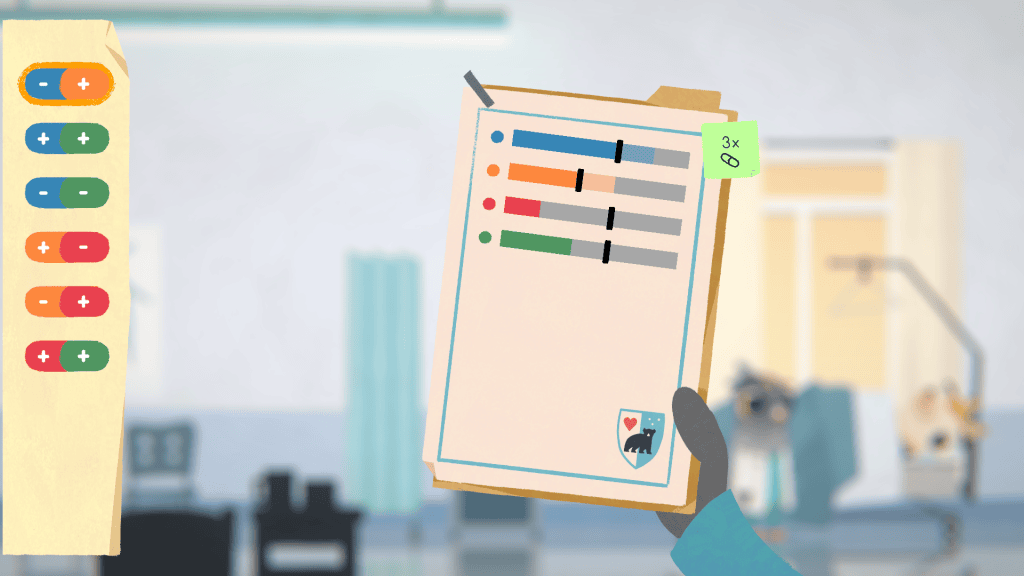
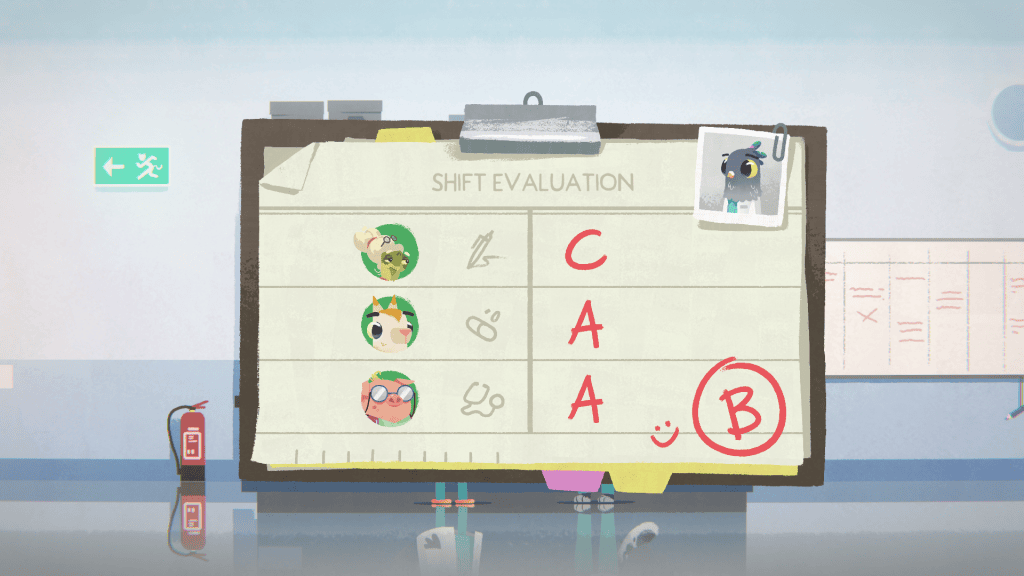
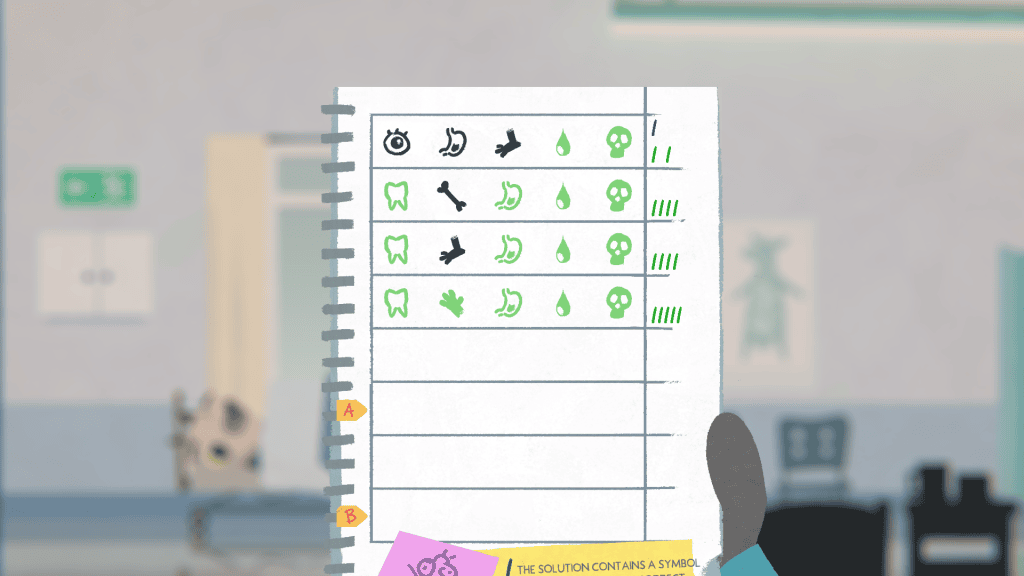
The Dear Old Shifts in Porcupine
Each day is marked by the shift at the hospital, the tasks and the return home. These act as separators and points of no return between what might happen before and what might happen after. So take your time to explore the city and talk to the locals. In some cases there will also be multiple answers to give. Exploration, however slow and cumbersome, rewards us by making us experience situations that translate, in terms of gameplay, into mini-games and very varied interactive exploration/adventure sequences. In Fall of porcupine each person is special and can tell and enrich us with their stories. Like an old patient who will tell us about her life through movies on the screen or Karl, our best friend. Grumpy and big-headed but who actually hides a heart of gold. We can even help a former patient write a comic of his own.
All depends on our choices and if we want to respond to one rather than another person.
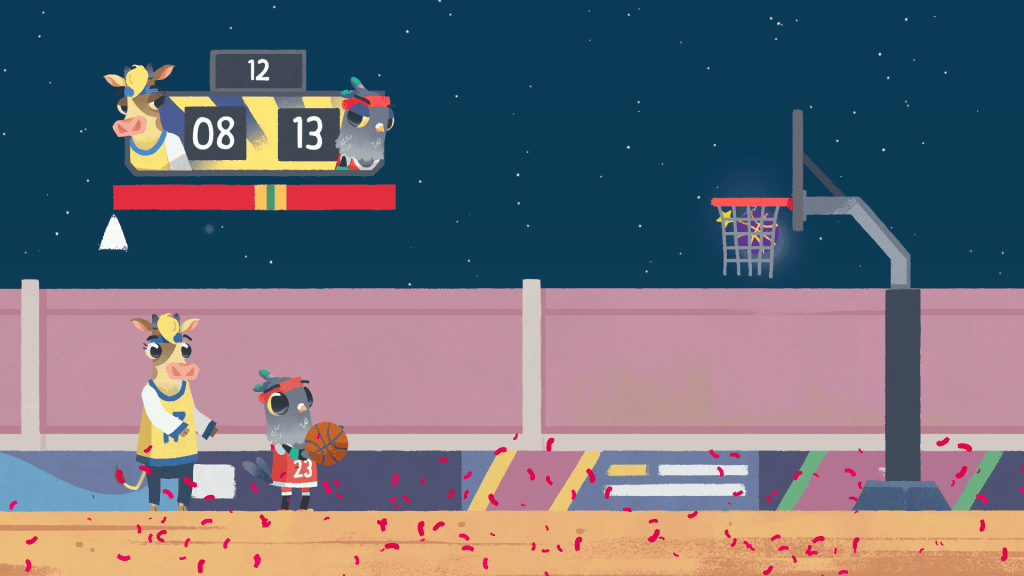

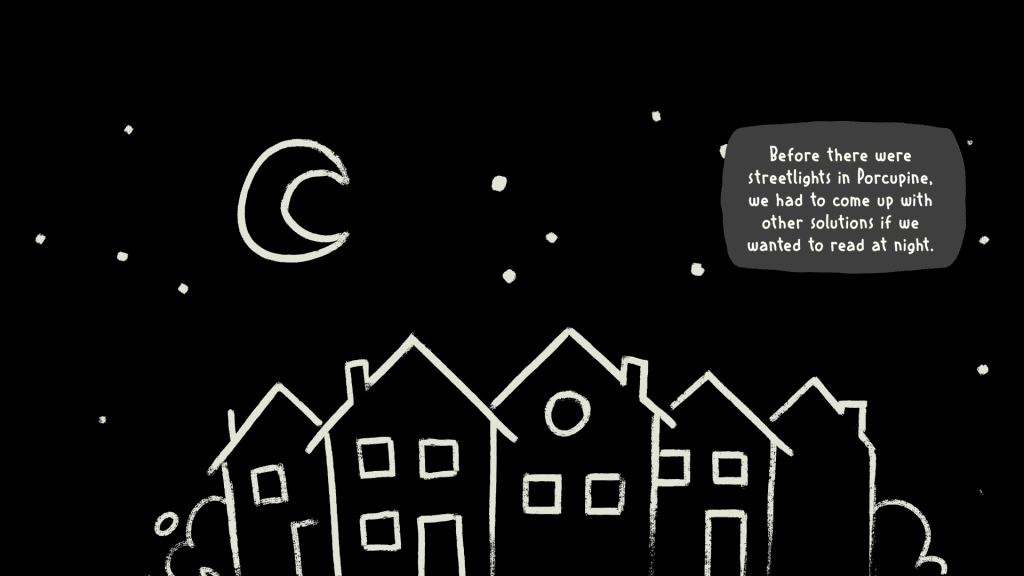
Style and Inspirations
Playing Fall of Porcupine, one cannot help but think of two things: Night in the Woods and Scrubs. Hospital life brings us back to the climate of the TV series, while the characters, anthropomorphic animals with a simple, clean and truly well-characterized drawing style, recall the video game. The songs and the soundtrack are also perfect and emphasize every moment very well. Fall of Porcupine is not reminiscent of Night in the Woods only for the stylistic choice, but also for the narrative choice. The topics covered are never trivial. We talk about both physical and mental illness, substance abuse, depression, fear of failure and acceptance of death. Not to mention the key issue which is that of the consequences that are paid in making indiscriminate cuts to the hospital service and its employees. Don’t be fooled by the sweetness of the drawings, the game is ready to throw some good punches in the stomach. Moreover, under the serene aspect of a quiet country town, you will soon discover that something lurks, and there will be no shortage of creepy and sometimes disturbing moments. Some inhabitants can hide some dark sides under an apparently kind and inoffensive soul.
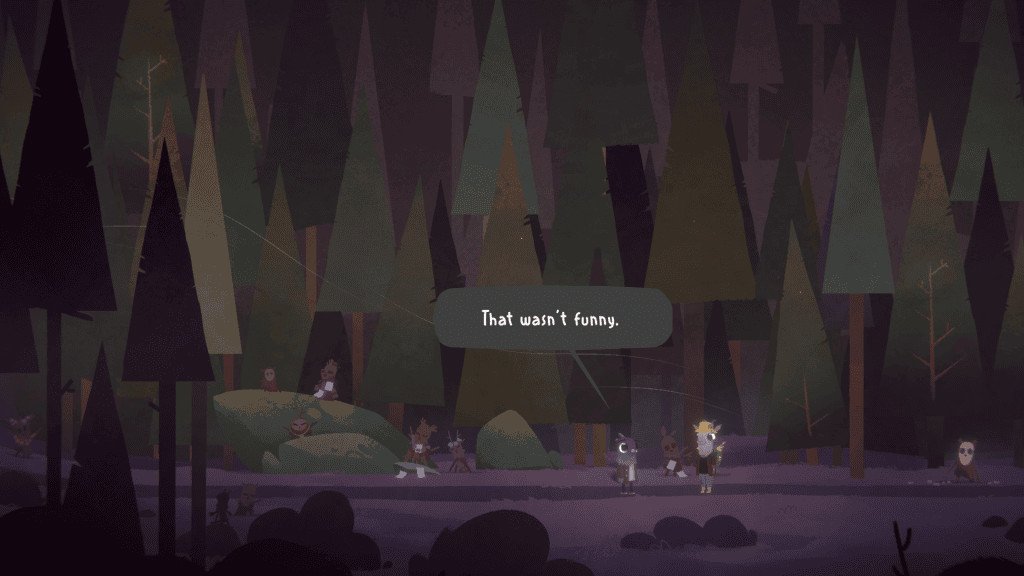

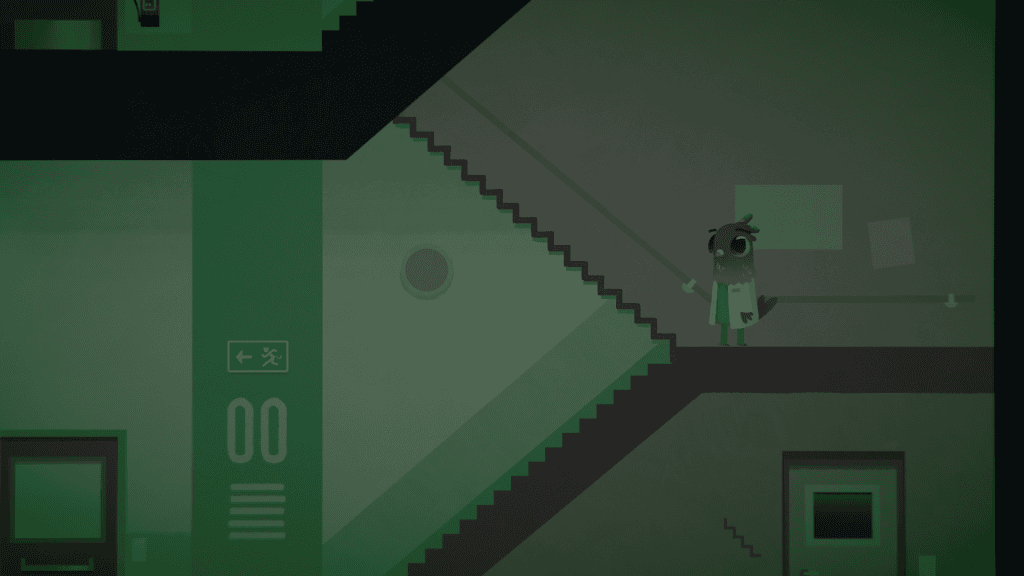
My Two Cents
Fall Of Porcupine is undoubtedly a title made with care and love, especially towards workers in the health sector. In fact, its key theme concerns the damage that speculation, cuts, corruption and poor management of the health system and its operators can cause to the community and to the operators themselves. It’s definitely not a game for everyone, as its slowness could put some players off and the minigames are a simple means to give some rhythm and freshness to an otherwise stale gameplay. For example, our protagonist’s feature, the jump, is only really useful to us twice. Shortcuts help but at the same time hinder exploration and discovery. Storytelling and exploration are the real strengths of the game. Walking around the city will make us feel almost like one of the inhabitants and it’s not difficult to empathize with Finley. We will soon enter the dynamic shift and free time where we will do many side activities.
Fall of Porcupine is a mature game, suitable for everyone but at the same time not. Talk about redemption, fear, sickness and death. Especially in the second part where everything will become more concrete, moving and raw. Fall can have several meanings, and these themes are very important and present.
Although the story is the main part, that’s where the Fall of Porcupine falls, right at the end. Many good secondary stories and a good main one which however closes hastily. Leaving some elements and non-secondary characters stories unfinished or even left halfway through.
Net of these shortcomings Fall of Porcupine is an adventure that is worth playing. Taking your time and exploring will be key to making the most of this bittersweet adventure.
Fall of Porcupine is available from June 15th on STEAM, XBOX, PLAYSTATION and NINTENDO SWITCH.
Fall Of Porcupine
PRO
- Simple, clean and truly well-characterized drawing style
- Beautiful soundtracks
- Strong and mature themes
- Great Narrative and Characters design
- Funny minigames and situations
CON
- Narrative lacks, especially in the last part
- Gameplay rhythm too slow
- Minigames are also simple and not challenging

